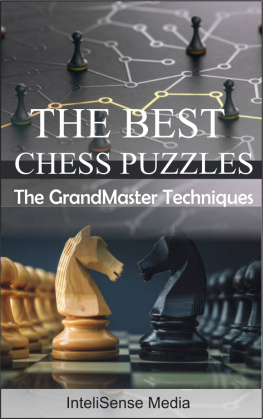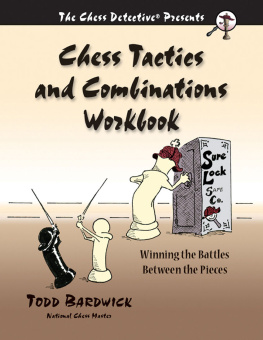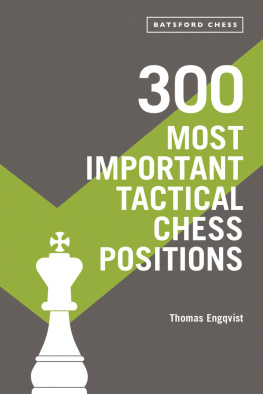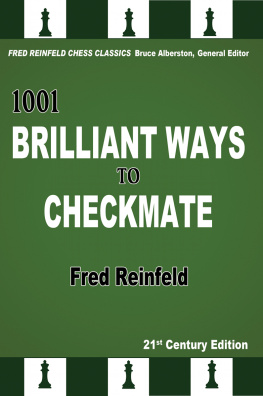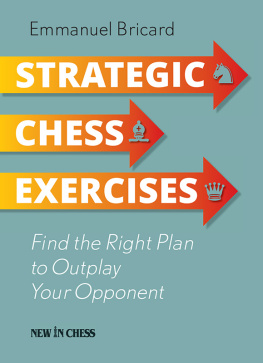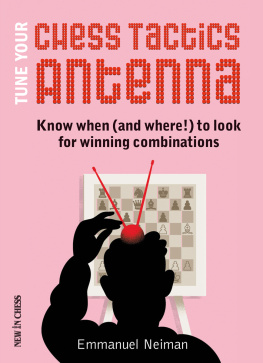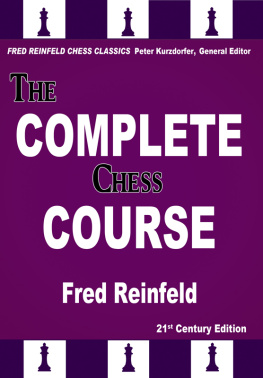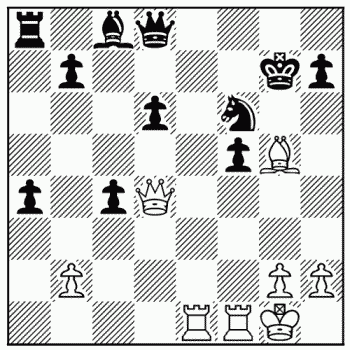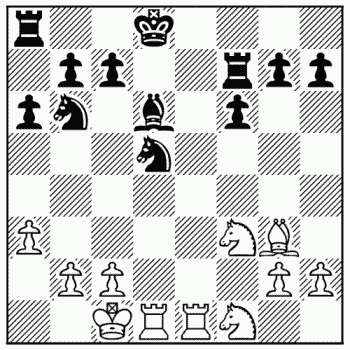
1001
Winning Chess Sacrifices and Combinations
by
Fred Reinfeld
21st-Century Edition
Fred Reinfeld Chess Classics
Bruce Alberston, General Editor

2014
Russell Enterprises, Inc.
Milford, CT USA
1001 Winning Chess Sacrifices and Combinations
by Fred Reinfeld
21st-Century Edition
The Fred Reinfeld Chess Series
Bruce Alberston, General Editor
ISBN: 978-1-936490-87-5 (Print)
Copyright 2014
Don Reinfeld, Judith Reinfeld and Bruce Alberston
All Rights Reserved
No part of this book may be used, reproduced, stored in a retrieval system or transmitted in any manner or form whatsoever or by any means, electronic, electrostatic, magnetic tape, photocopying, recording or otherwise, without the express written permission from the publisher except in the case of brief quotations embodied in critical articles or reviews.
Published by:
Russell Enterprises, Inc.
P.O. Box 3131
Milford, CT 06460 USA
http://www.russell-enterprises.com
Cover design by Janel Lowrance

Editors Introduction
The present work, 1001 Winning Chess Sacrifices and Combination is the companion volume to Reinfelds 1001 Brilliant Ways to Checkmate. Of course each book can be taken on its own, but together they make a wonderful collection, and cover the full range of tactical chess.
You can expect some overlap between the two books, as many of the positions call for a checkmating attack on the hostile king. Here, however, checkmate is not at all a foregone conclusion (as it was in the first volume). Often the defenders king survives the direct assault but it is usually at the expense of crushing material losses.
Thats a big difference. Suddenly, with one stroke, the play for material advantage, Reinfeld opens up the whole arsenal of chess tactics. Its like an expanding universe of creative ideas. Only here, we do have to put a limit of 1001.
A glance at the table of contents shows that Reinfeld has arranged his quiz positions so that they fall into orderly chapters, each with a common theme. Still, the degree of difficulty varies widely. Easiest are one move shots, suitable for players starting out. Most difficult are the examples that run seven moves and more; some of these may even stump an ordinary master.
But dont let that throw you. This is mainly a book of combinative ideas, all designed to enhance your arsenal of weapons. That its a book of ideas is apparent when you get to the solutions. Reinfeld is determined to keep matters as simple and clean as possible. One main line is the ideal, an occasional sideline here and there, perhaps a verbal explanation or two, but thats about it. Reinfeld is determined not to get embroiled in complicated analytical variations. Thats not the purpose of his book.
Of course the ambitious reader can do his own analytical work (that does not mean feeding the position to the computer). And I suspect that was an unspoken part of Reinfelds agenda: to get his reader to the level of competence, and confidence, where hes not afraid to work things out for himself.
The editors task was to redo the diagrams (the old ones look a bit worn) and type up the solutions in algebraic notation. Along the way I made a few changes here and there: correcting the occasional typo, adding a clarifying variation, a bit of restructuring or shifting the emphasis when I discovered a defensive resource not previously mentioned. You can argue that I should not have done any of this and just let Reinfeld speak for himself. And maybe on another day I would agree. But not today.
Bruce Alberston
Astoria, New York
January 2014
Preface
Many of todays players, now the grandparents of chessplaying teenagers, fondly recall growing up with the Reinfeld books, which covered all aspects of chess, from the openings to the endgame, and included generous helpings of chess lore and the lives of the greatest chess masters.
Reprinting chess books by our father, Fred Reinfeld (1910-1964), ended in the 1980s as descriptive notation was phased out in favor of the more popular algebraic notation. We are extremely grateful to Bruce Alberston, who has taken up the task of converting Reinfelds notations to algebraic.
Thanks also to Russell Enterprises for publishing a 21st-century version of this, and, hopefully more, Reinfeld chess classics, thereby introducing Fred Reinfelds teaching genius to new generations of chess enthusiasts, especially to beginners and mid-level players eager to sharpen their skills at the chessboard.
Don and Judith Reinfeld
Introduction
Sacrifices and Combinations
The Man who wrote, Tactics is 99 per cent of chess, might well have added and 99 per cent of the fun, too!
Brilliant sacrifices and combinations, either calculated in advance or played on the spur of the moment, give us thrill that cannot be equaled by any other aspect of the game. And by a very fortunate coincidence, these brilliant strokes are just what we need in order to become first rate players.
But then comes the practical question: How do we learn to become brilliant players? (Or is this a knack that one has to be born with?) The answer is reassuring: Every chessplayer, no matter what his degree of skill may be, can learn how to play brilliant chess.
The first step toward mastery is to become familiar with the different types of tactical motifs. The second step is to study a great many examples of these tactical themes. So, the object of this book is to add to your knowledge, to make you a strong chessplayer, and (last but not least) to delight you with some of the most beautiful moves ever played on the chessboard.
Fred Reinfeld
1. Pinning
The pin is by far the most frequently used tactical theme. It may be defined as an attack on a piece which screens a second piece from attack. The unit attacked in this way is said to be pinned. If attacked with enough force and ingenuity, it can often be won or completely disabled. Some examples:
In Blacks knight is subject to an absolute pin. (This is the term we use when the king is the screened piece.) Worse yet, the knight is pinned in two ways, by the white queen and bishop. And still worse, the knight is not protected by a pawn, which is the best and cheapest defense for a pinned piece. All these weaknesses combine to make possible Whites brilliant demolition of Blacks position.
In , where White first sacrifices in order to win Blacks queen by means of a pin.
Sometimes a pin defeats an already existing pin. is a thrilling example of this.
A frequent use of the pin is to pile up on the pinned piece with an effective pawn advance, as in .
White Moves First
Next page


